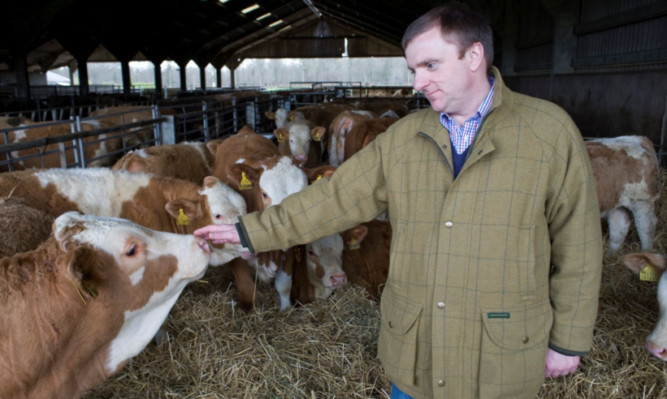Quality Meat Scotland’s commitment to animal welfare in the production of beef, lamb and pork in the country is highlighted in the Animal Welfare and Wellbeing Charter launched by QMS.
The aim of this new corporate document is to clearly articulate and formalise the priority placed on animal welfare and wellbeing by QMS and others working in the Scottish red meat industry.
The launch of the charter also reflects the importance of animal welfare to the long-term growth of red meat production in Scotland and consumers’ growing expectation of high standards of animal welfare.
The document highlights the complementary relationship between “animal welfare” (relating to the physical needs of animals) and “animal wellbeing” (relating to the emotional state of animals and their quality of life).
It contains a number of key guiding principles including the encouragement of good animal welfare practices, collaboration between QMS and the statutory agencies responsible for animal welfare and the adoption of a practical approach to animal welfare (focusing on management regimes, stock husbandry and animal behaviour).
The guiding principles of the charter are embedded in all QMS Quality Assurance Schemes and activities, ensuring existing high standards of welfare in the production of red meat industry in Scotland from farm to processor.
The charter identifies the “Five Freedoms” as the minimum standard of animal welfare.
These are: freedom from hunger and malnutrition, freedom from discomfort, freedom from pain, injury or disease, freedom to express normal behaviour, and freedom from fear and distress.
QMS chairman Jim McLaren welcomed the development of the charter.
“This charter reflects Quality Meat Scotland’s ongoing commitment to animal welfare in the wide-ranging work we undertake.”
He continued: “Importantly, the charter we are launching today is also a clear indication of the long-established commitment of our industry to animal welfare, which our market research clearly indicates continues to increase in importance in terms of consumers’ expectations.”
QMS works closely with the Scottish SPCA, Scotland’s leading animal welfare charity, which provides expert advice on livestock welfare.
QMS’s relationship with the Scottish SPCA is based on transparency and integrity.
A key aspect of this integrity is the fact there is no commercial arrangement monetary payment for services between QMS, or others working in the Scottish red meat industry, and the Scottish SPCA.
Scottish SPCA Chief Superintendent Mike Flynn said: “Our primary activity is to ensure all animals in Scotland enjoy high standards of welfare as defined by the Five Freedoms, irrespective of whether they have been bred to be part of the food chain.
“We value the opportunity to work closely with the farming sector and very much welcome the introduction of the Animal Welfare and Wellbeing Charter, which places importance on the physical needs of animals as well as their emotional state.”
Penny Johnston, policy manager for animal health and welfare at NFU Scotland, said: “Scotland’s red meat industry relies on its reputation for quality, both in terms of quality of production and the quality of its products.
“NFUS welcomes the QMS Animal Wellbeing charter and the clear message that it sends to consumers that animal welfare is at the heart of livestock production in Scotland.”
